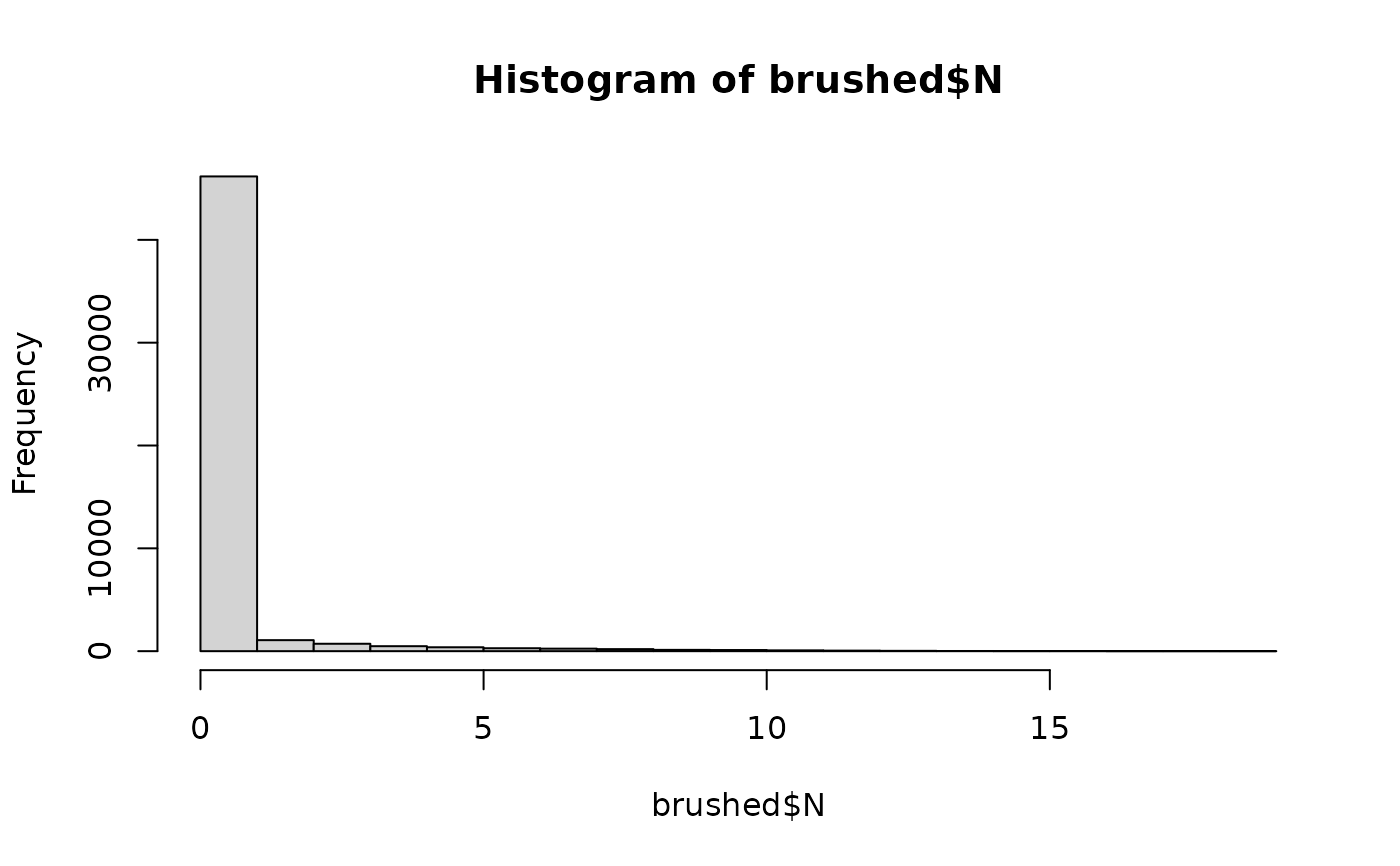The function caBrush() models the removal of bacteria during the brushing or scrubbing step.
The mean log10 reduction due to brushing must be provided.
Usage
caBrush(data = list(), nLots = NULL, sizeLot = NULL, logDecBrush)Arguments
- data
a list of:
N(
CFU) A matrix of sizenLotslots bysizeLotunits representing the numbers of L. monocytogenes on the rind, from contaminated cultivation lots;PPrevalence of contaminated harvested lots (scalar).
- nLots
see
Lot2LotGen()function.- sizeLot
see
Lot2LotGen()function.- logDecBrush
Mean log10 reduction attained by brushing or scrubbing (scalar, vector of size the number of
Nrows (representing lot-to-lot variability), or vector of size the number ofNcolumns (representing element-to-element variability)).
Value
A list of two elements of the data objects:
N(
CFU) A matrix of sizenLotslots bysizeLotunits containing the numbers of L. monocytogenes on brushed cantaloupesPPrevalence of contaminated harvested lots post-brushing (scalar).
Note
Abrasive brushing for cantaloupe cleaning has been shown to be efficient in removing biofilms of L. monocytogenes attached to the rind in Fu et al. (2020) .
References
Pouillot R, Delignette-Muller M (2010). “Evaluating variability and uncertainty in microbial quantitative risk assessment using two R packages.” International Journal of Food Microbiology, 142(3), 330-40.
Team RC (2022). R: A Language and Environment for Statistical Computing. R Foundation for Statistical Computing, Vienna, Austria. https://www.R-project.org/.
Fu Y, Bhunia AK, Yao Y (2020). “Abrasive brushing reduces pathogen biofilms at cantaloupe rind surface.” International Journal of Food Microbiology, 329, 108685. doi:10.1016/j.ijfoodmicro.2020.108685 .
Author
Regis Pouillot rpouillot.work@gmail.com

